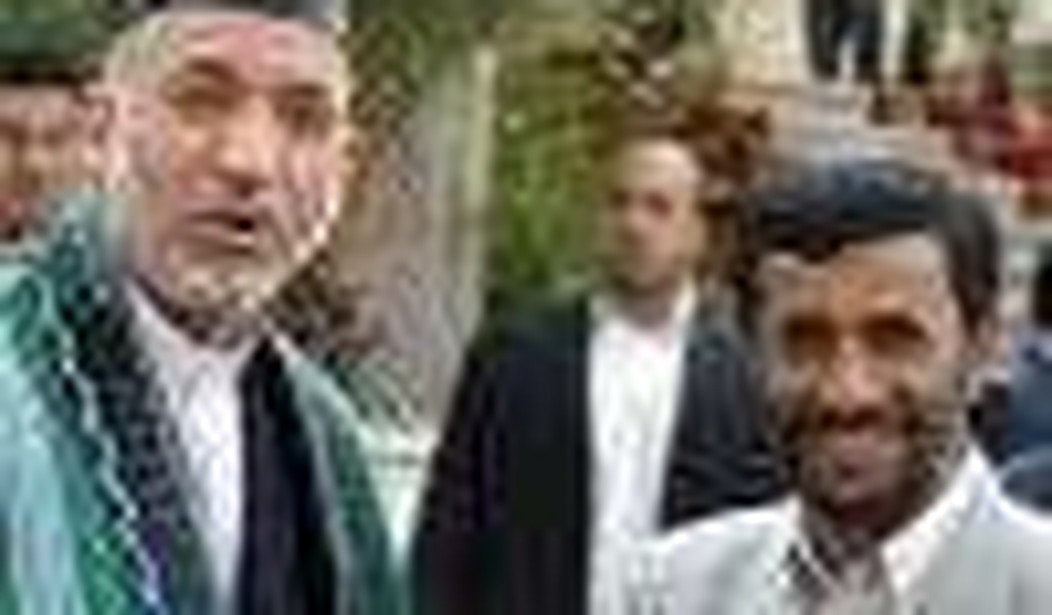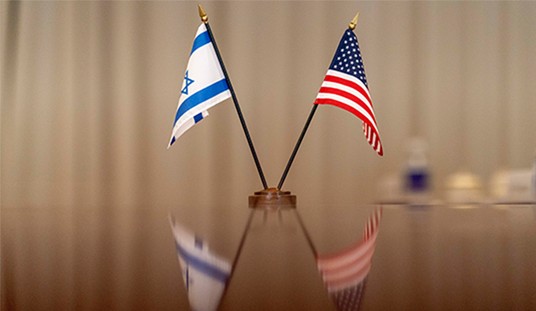Iran is widely perceived as one of America’s chief international foes and a charter member of the Axis of Evil. Even after an NIE expressed doubts that it was still developing nuclear weapons, Norman Podhoretz argued that the case for military action against Iran still stood. Podhoretz believed that any pause in the development would be merely temporary and that “if Iran is to be prevented from becoming a nuclear power, it is the United States that will have to do the preventing, to do it by means of a bombing campaign, and … do it soon.” Afghanistan, on the other hand, was described by President George W. Bush as a stalwart ally in the War on Terror.
It would therefore surprise many Americans to learn that Afghanistan’s largest trading partner is Iran. The association between Afghanistan and Iran goes back a long time; the province of Herat, for example, was formerly part of the Persian empire. And it is trying to get closer again in a menacing way; Teheran is furiously attempting to counter the American presence to its east by pulling every economic, diplomatic, and subversive lever it can to draw Afghanistan back into its sphere of influence.
In March 2006, the Afghan official news agency Bakhtar reported Iranian officers were secretly in border towns inside Afghanistan. Before September 11 Iran had been busily attempting to stem the influence of the Taliban, its Sunni rivals for dominance in Islamic militancy. But after the U.S. drove the Taliban from Afghanistan, Teheran cozied up to its former rivals and began making alliances with its former Sunni enemies to fight against America. It is actively working to expel the U.S. from Afghanistan.
Teheran also has many cultural and economic levers that it uses to spread its influence in Afghanistan. The New York Times describes how Iran has built highways through Afghanistan signposted every five miles with quotations from the Koran.
Two years ago, foreign engineers built a new highway through the desert of western Afghanistan, past this ancient trading post and on to the outside world. Nearby, they strung a high-voltage power line and laid a fiber-optic cable, marked with red posts, that provides telephone and Internet access to the region. “Forgive us, God,” declares one. “God is clear to everyone,” says another. A graceful mosque rises roadside, with a green glass dome and Koranic inscriptions in blue tile. The style is unmistakably Iranian. … The battle for young hearts and minds plays out in Herat, where children play soccer in front of an American-built school; behind it, a school built by the Iranians.
As in Iraq, Iran sought to operate through the Shiite community that makes up 20 percent of Afghanistan’s population. Another New York Times piece cited Qari Ahmad Ali, a Shiite commander once backed by Iran, as saying that since 2001 his former patrons had funneled millions of dollars to a web of Shiite religious schools, and that the Sadaqia Madrasa in Herat was at the center of an effort to spread Shiite fundamentalism. If their support for the Taliban would not do the trick, the slow poison it was injecting into the veins of its neighbors eventually would.
So why doesn’t America react more forcefully against Teheran’s aggression? One reason is that Iran’s geography and road network play a crucial role in the Afghan economy and reconstruction. While routes through Pakistan handle most of the relief and donor cargo, Iranian routes carry the bulk of the commercial freight. “This reality limits Washington’s options to pressure Tehran since if Iran blocks its border, the Afghan economy could collapse.” The map below, taken from an UNCTAD study, graphically depicts Afghanistan’s dependence on Iran and Pakistan for access to the Arabian sea.
Kabul’s growing tension with Pakistan, exacerbated by Taliban cross-border attacks on its territory, have made it anxious to avoid a total dependence on the port of Karachi. And the only other way to the sea is through Iran. The Jamestown Foundation explains how it works: “renewed links with Teheran allow Afghanistan to use the Iranian port of Chabahar for its import-export trade. … Kabul also can use the other main Iranian port, Bandar Abbas, due to a transit agreement signed in 1974.”
But Afghanistan’s landlocked location puts it in the center of a strategic energy route built on the traces of the Silk Road. A 1,680 km Trans-Afghanistan pipeline was planned to take gas from Turkmenistan to the border of India, with Kabul to have received 8% of the revenues. But troubles with the Taliban have prevented its completion. It is the role of Central Asia as a petroleum highway that runs like a common thread through the destinies of Iran and Afghanistan — especially since the new Great Energy Game has cast Iran, a charter member of the Axis of Evil, in the unlikely role of the hoped-for savior of Europe from the clutches of Russian attempts make it beholden for its supplies of natural gas.
The New York Times reported in January 2008 that Russia had cemented its stranglehold on European energy sources by concluding a deal with Bulgaria. “The agreement … dealt another blow to … a major European Union gas pipeline project designed to diversify energy sources and reduce dependence on Russia. The union intends to buy gas from Iran and Azerbaijan and ship it through Turkey in pipelines that are run to Southern and Western Europe. But disputes over the routes, financing, and how to deal with Iran’s nuclear program have delayed the project.” The Asia Times notes that with European energy needs growing at a rapid rate, “Europe is increasingly left with only one serious option for diversifying its gas imports — Iran.”
The geographical position and hydrocarbon resources of Iran have complicated American policy in Afghanistan and its efforts to stop Teheran from becoming a nuclear-weapons power. The Russian offers to sell Iran nuclear fuel are probably designed to entice Teheran away from the Western gas markets into an energy alliance with Russia. As the Asia Times noted elsewhere, “Moscow can be expected to make robust efforts to coordinate with Iran over its oil and gas output and exports. The rationale for such a coordinated strategy involving Iran is very obvious. First, Moscow is intensely conscious of the Western awareness of Iran’s enormous untapped hydrocarbon reserves as an alternative to Russian supplies. Russia will strive to stay ahead of the European, and eventually American, overtures to Iran.”
The fall of Iran to Khomeini under the Carter administration created a host of difficulties for U.S. policy, not only in the War on Terror, but in its relations to Russia, which persist to this day. On the one hand, Iran is actively seeking to undermine the U.S. mission in Afghanistan. But on the other hand, Iran is vital to the economic life of Afghanistan, and without economic development no counterinsurgency campaign can succeed. Hence, while Iran’s nuclear program must be stopped at nearly all costs, the nuclear program stands in the way of enlisting Iran in the fight against the energy offensives of Russia.
The dilemma is that if America strikes out too hard against Teheran, it runs the risk of ruining Afghanistan’s economy; but if it ignores Teheran’s subversive activities, Iran may eventually evict it from Afghanistan. If America drops its opposition to Iran’s nuclear weapons program, Europe may gain access to its natural gas but only at the cost of spreading the cloud of nuclear danger over South Asia and the Middle East. They are all hard choices and there are no clear paths through the minefield.
Richard Fernandez writes at the Belmont Club.











Join the conversation as a VIP Member